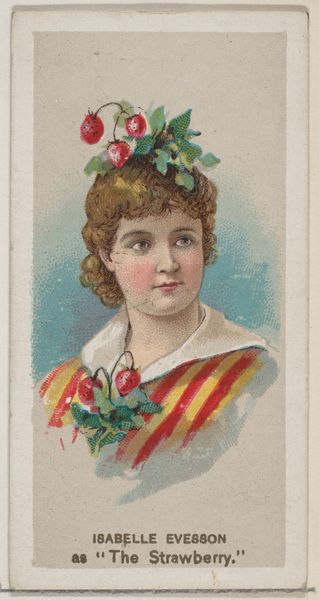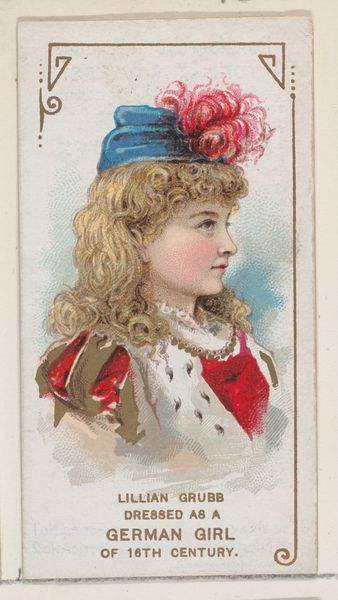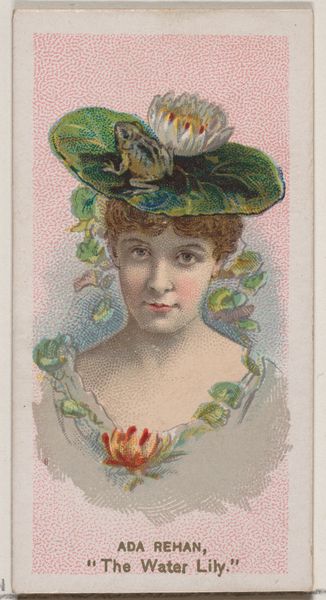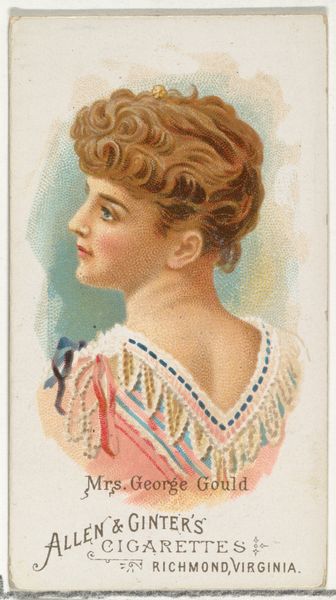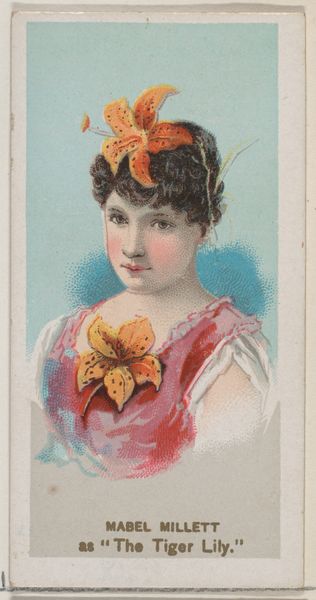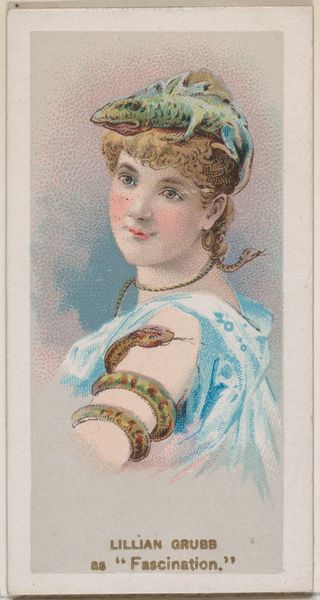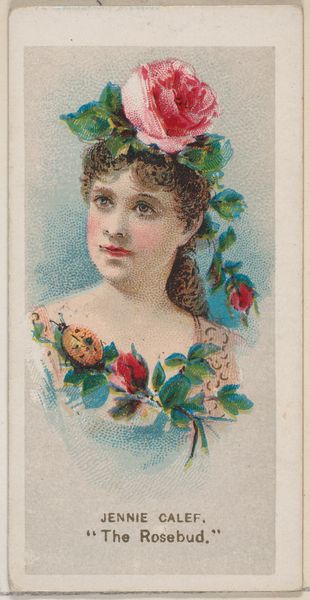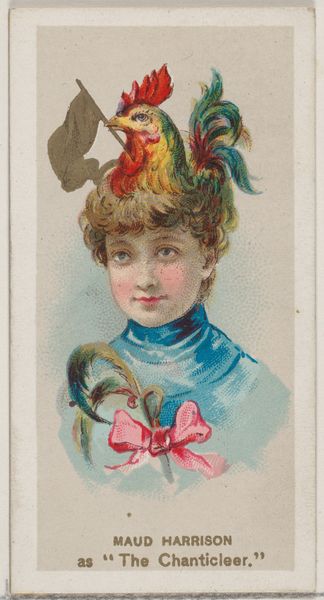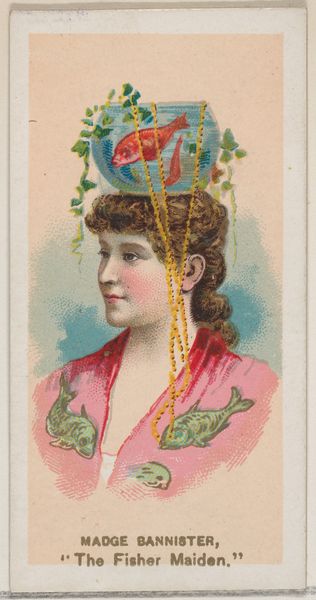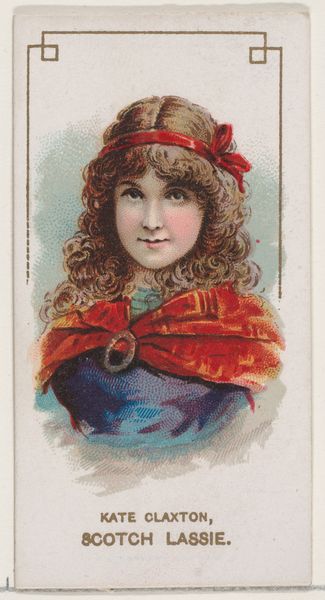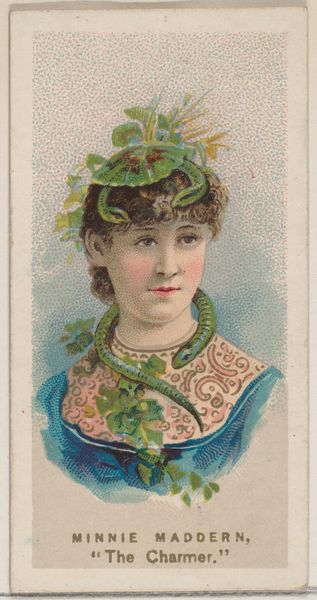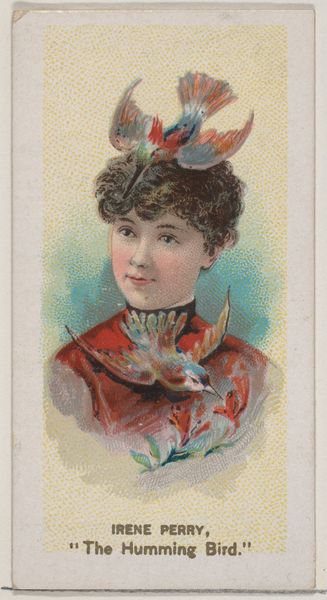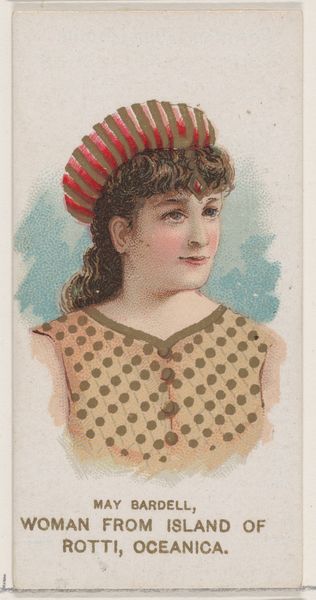
Lillian Blow as "The Harvest Queen," from the series Fancy Dress Ball Costumes (N73) for Duke brand cigarettes 1889
0:00
0:00
drawing, coloured-pencil, print
#
portrait
#
drawing
#
coloured-pencil
# print
#
caricature
#
coloured pencil
Dimensions: Sheet: 2 3/4 x 1 1/2 in. (7 x 3.8 cm)
Copyright: Public Domain
Editor: This is Lillian Blow as "The Harvest Queen," a colored pencil print from 1889 by W. Duke, Sons & Co. What strikes me is the almost comical disconnect between the 'refined' portrait style and the very literal depiction of 'harvest,' like a child dressing up. How do you interpret this work, given its context as a cigarette card? Curator: Precisely! We have to unpack the cultural codes here. These cards weren't just advertisements; they were circulating potent ideologies. Consider the late 19th century: anxieties around industrialization, urbanization, and immigration were rife. Nostalgia for a romanticized agrarian past surged. Editor: So, Lillian Blow as the Harvest Queen is meant to evoke that nostalgia? Curator: In a way, yes, but also to naturalize hierarchies. "The Harvest Queen" presents a white, almost ethereal femininity intertwined with abundance, a powerful visual shorthand that links notions of racial purity with prosperity and rightful ownership. The card subtly reinforces who is seen as belonging to, and benefiting from, the nation's bounty. It is important to understand the underlying politics that elevated an ideal that systematically excluded others. What appears innocent reveals itself as enmeshed within prevailing exclusionary practices. Editor: I see your point. I was so focused on the seemingly naïve depiction, I hadn't considered the underlying social implications it carries. It is a good reminder that art never exists in a bubble! Curator: Indeed! And questioning presumed innocence is often the most politically charged act we can take. Looking closely, this little piece speaks volumes.
Comments
No comments
Be the first to comment and join the conversation on the ultimate creative platform.
